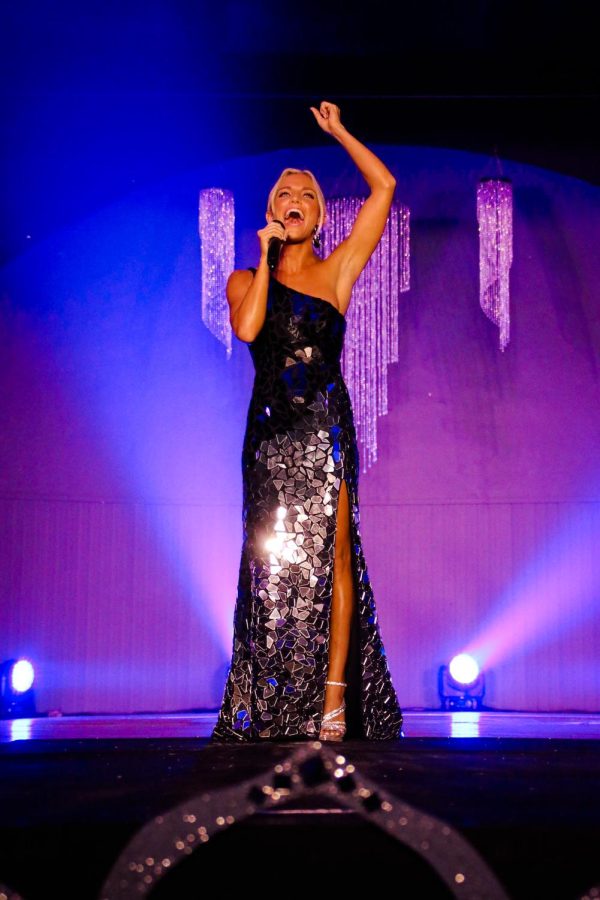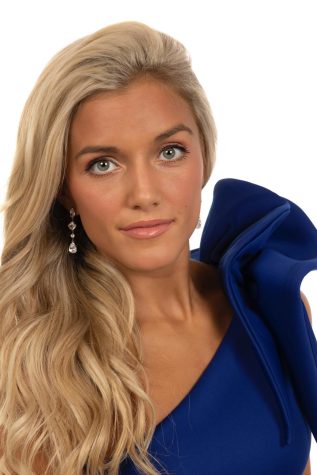Does the stigma people have on pageant girls still exist or are we evolving with the times?
February 15, 2023
Growing up, my parents always told me the starfish story. It went something like this:
A young boy walks up and down a beach throwing washed-up starfish back into the ocean. A man watching him asked, “What are you doing?”
“If I don’t throw them back in,” the boy replied, “the starfish will die.”
“But don’t you realize,” the man said, “there are miles and miles of beach with starfish all along it? You can’t possibly make a difference.”
The boy picked up yet another starfish. “It makes a difference to this one.”
This story about making a difference to one starfish, or in human terms, to one person at a time, comes back to me at times, such as when I’m competing in yet another pageant.
Pageants get stereotyped as being nothing more than hairspray and strutting down runways. Nothing could be further from the truth. I started competing in pageants at 16 but admit I thought I was entering the land of toddlers and tiaras. Boy, was I wrong! Six years in, and I was honored earlier this year when I was named Miss Indiana Volunteer. What drives me is using these platforms to educate and advocate for mental health.
It’s based on my own personal struggles.
Since around age 15, I have battled anxiety and depression. But it was hidden under friendly chatter, smiles and laughter. People knew me for an abundance of energy and confidence. Little did they know, that confidence had dwindled inside of me. I was particularly adept at making it seem, at least on the outside, that everything was fine. I became an unconscious actor in my own life, wearing a mask molded to my surroundings. I had lots of friends, was on the cheerleading team and student council, and I did theater. Most people wouldn’t have guessed that a girl like myself was struggling so badly on the inside.
This feeling grew worse as social media grew. That unfriendly voice in my head became worse as the comparison game set in. I felt very alone in these thoughts. I felt as if I was the only person in the world feeling this way.
My sophomore year of high school, something happened that I will never forget. I was standing in my bathroom in front of the mirror, staring at myself saying the most hurtful things. “You aren’t beautiful, you aren’t enough, you aren’t talented, and you aren’t smart enough.” I would consider this moment as one of my lowest.
My older brother walked in and asked what was wrong.
I tried—and failed—to brush the tears off my face, told him everything was fine and turned away.
He spun me around. “Everything isn’t fine. I could hear you from the other room.”
Tears kept flowing down my face. I felt defeated.
“I need you to turn and face yourself in the mirror. I need you to look at yourself and say, “I am enough. I am beautifully created. I am talented and driven. I work hard, and I am smart.”
This was extremely difficult, and my lifeless eyes didn’t make it any easier, but I did exactly what he said. I sputtered out the statement and felt a sense of relief. For the first time, maybe just maybe, I saw beauty inside of me for the first time in a long time.
Since that day with my brother, I have realized how true that statement is about how a simple act can matter to any human being—just as being flung back into the ocean matters to an individual starfish.
A year later, growth had taken place in myself. I’m not sure whether my brother even remembers the day in the bathroom, but I felt I had the tools necessary to take on my anxiety and depression. I also wanted to give back and share my story to those who maybe needed to hear it most. That’s when I learned about the Miss America Organization and its pageant that allows girls to create a social impact initiative. My mom helped me develop a platform of my own in order to compete. I wanted to educate and advocate for mental health, so I started my own nonprofit organization called The Diamond Bucket Project. I went to schools and taught younger students the importance of loving themselves while also sharing my own personal story.
For the pageant itself, there were four categories of competition to prepare for: Talent, fitness, evening gown and personal interview of questions asked onstage. I really had no idea what I was getting myself into. Could I do more than just win a sparkling tiara at the end? Whatever the prize, the reason I was competing was to help students overcome anxiety and depression. I was also passionate about taking care of my body and was able to show my skills by performing an exercise routine onstage. I shared my speaking skills during the personal interview, which really showed me what a true job interview could entail. I explored my interest in musical theater onstage during the talent phase. To top it all off, every single person that competes is awarded a scholarship. Over the years, I have won enough money to pay off my student loans. Isn’t that reason to compete in itself?
After my first pageant, I was hooked. Not to mention, all of my misconceptions about pageants were eviscerated. I realized what they truly are. Pageants are far more than just glam, hairspray and pretty dresses. Pageants are a platform to empower women across the nation. For any young women out there reading this – anyone, and I mean anyone – can compete. You just have to find your reason for wanting to be there, even if your story started just like mine did. Pageants continue to give me a voice and I will never turn the volume down.
Note: Stevie Griffin will compete this summer for the title of Miss Volunteer America.



